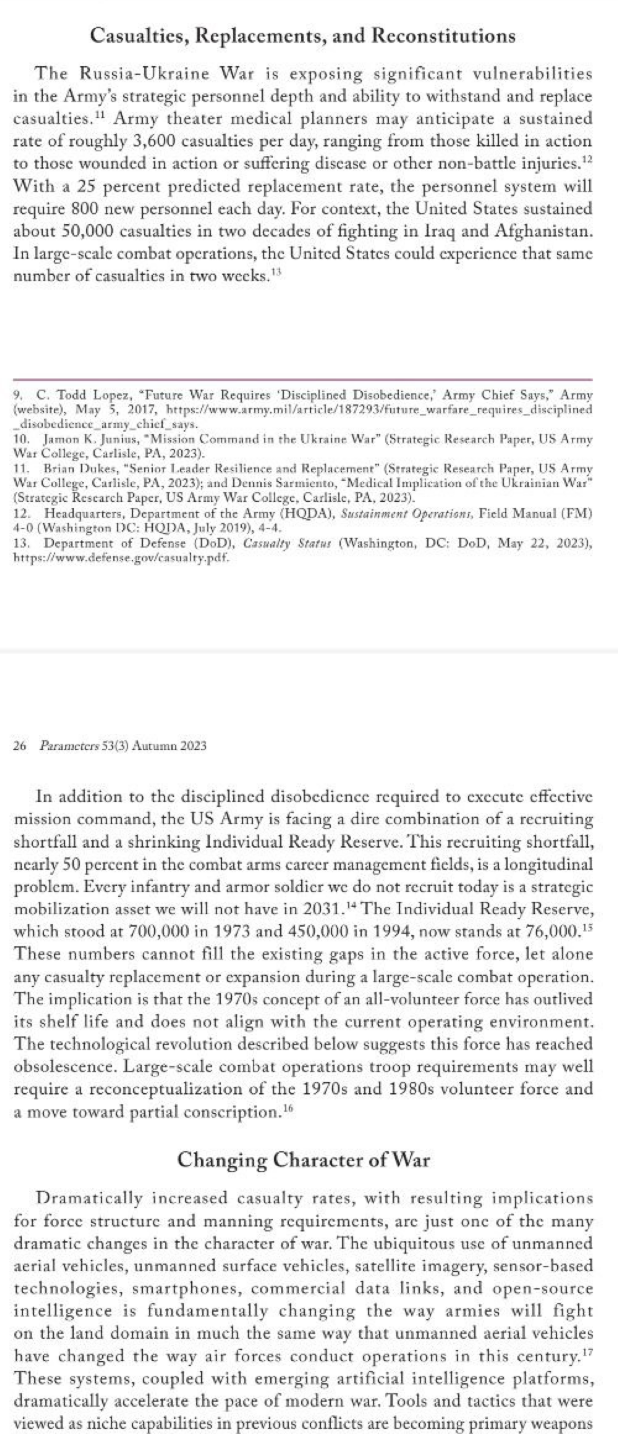You just gotta love how US military say everything openly and in their reports. In particular, it has a forecast of US casualties and mobilization reserves in a conflict of this level.
Thesis:
- military doctors project a [KIA and WIA] casualty rate for the US Armed Forces of 3,600\day.
- The combat replenishment rate is 25% or 800 troops per day.
- In 20 years of combat in Iraq and Afghanistan, the U.S. has lost about 50,000 people.
In a conflict of the Ukrainian level, the U.S. would suffer such losses in 2 weeks.
- The recruitment shortage is a major problem.
- every soldier not recruited today is a strategic mobility asset [IRR or reservists] that the US will not have in 2031**
- IRR was 700K in 1973, 450K in 1994, now at 76K.
- These numbers will not make up for the projected losses.
- the 70’s concept of contract forces is outdated and does not fit the current operational environment.
- The needs of the U.S. Armed Forces for a Ukrainian-level war require a transition to conscription.



The US Congress definitely keeps voting for more military spending and protecting insurance companies and big pharma - no dispute there.
There’s quite the surge of pro-Russian folks here believing that Russia has an equivalent military and it’s just not remotely true.
Count whatever you want: in flight refueling, airborne radar, aircraft carriers, etc ad nauseum.
I’m not saying anything is good or right or how it should be, but objectively that’s how it is and isn’t surprising given the level of constant spending.
I don’t think it matters who would win a direct war between america and russia because if there was a direct war between america and russia everyone who would care about the outcome would have died in a nuclear war